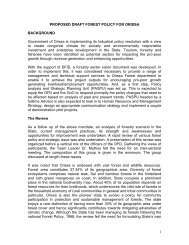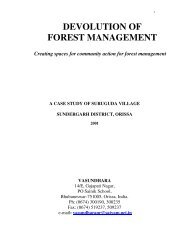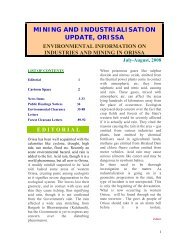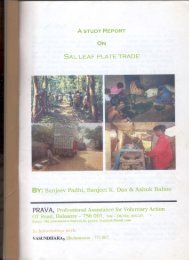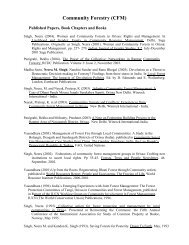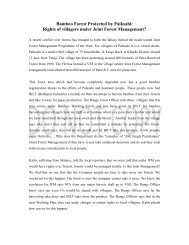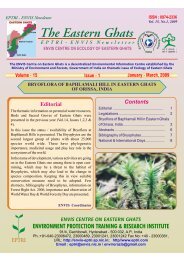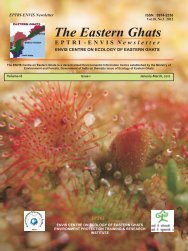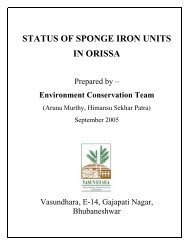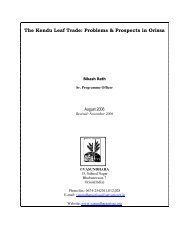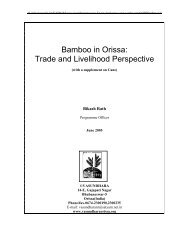Protected Area Network in Orissa - Vasundhara
Protected Area Network in Orissa - Vasundhara
Protected Area Network in Orissa - Vasundhara
- No tags were found...
Create successful ePaper yourself
Turn your PDF publications into a flip-book with our unique Google optimized e-Paper software.
communities and particularly for states like Madhya Pradesh. This poses a conflict<strong>in</strong>gpicture vis-a-vis forest and wildlife laws.Ma<strong>in</strong>ly legal issues are emerg<strong>in</strong>g from rights, control and access over resources. Ourwildlife laws and policies limit the access of local people over resources, which createmajor conflict. Around 60% of India’s PAs are <strong>in</strong>habited by humans. Almost 4 millionpeople <strong>in</strong>side India’s protected areas most of them belong<strong>in</strong>g to families that havelived <strong>in</strong> these areas before the protected areas were notified. All these people aredependent on local resources for fulfillment of basic needs. All the people liv<strong>in</strong>g<strong>in</strong>side protected areas and <strong>in</strong> regions adjacent to the protected areas are dependent onlocal resources for fuel, fodder, medic<strong>in</strong>es, non-timber forest produce, fish and otheraquatic produce, livelihoods, water, cultural sustenance, and myriad other criticalresources. In many cases collection of non-timber forest produce contributes to morethan 50% of each household’s earn<strong>in</strong>gs; more importantly, up-to 100% of the dailyrequirements of such families comes from forest or aquatic produce. Thus thesepeople are primary stakeholders of <strong>Protected</strong> <strong>Area</strong> Management. But they are neitherconsidered <strong>Protected</strong> <strong>Area</strong> Management nor their basic needs are dealt. Local peopleare closely l<strong>in</strong>ked with resources so they have great potential <strong>in</strong> wildlife conservation.But <strong>in</strong> our conservation approach local people are always considered as threat toconservation therefore restricts access of local people over resources, it is completelyignor<strong>in</strong>g the social aspect of natural resource management, and exclud<strong>in</strong>g humanfrom nature. Thus converts potential allies <strong>in</strong>to poachers caus<strong>in</strong>g depletion ofresources, which are not only affect<strong>in</strong>g humans but also our conservation goal.Many times due to improper survey and settlement processes these villagers areconsidered as encroachers. Many times conflict between forest official and localpeople arises due to restriction on accesses to the resources, which were enjoyed fromhundreds of years. But situations differs from location to location, it depends uponvarious factors. Various tribes are becom<strong>in</strong>g accustomed with modern forces ofglobalization. But Various PTGs are still ma<strong>in</strong>ta<strong>in</strong><strong>in</strong>g their relations with nature, asthese were century before.In comparison with other nations, wildlife laws <strong>in</strong> India are considered among the‘progressive’ <strong>in</strong> the world, but they have failed to stop the dra<strong>in</strong> of nature. The131



